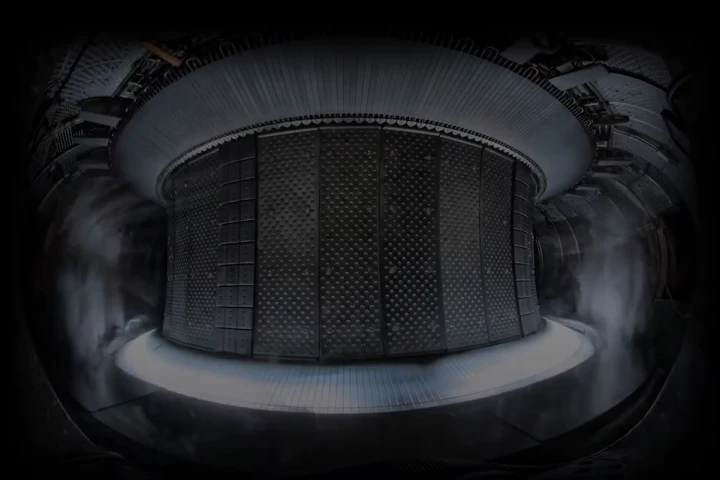Legendary science fiction author Sir Arthur C. Clarke (1917-2008) scored another hit in the prediction department on Monday, July 23, 2012 when NASA tested an inflatable heat shield that he foresaw back in the 1980s. The test of the Inflatable Re-entry Vehicle Experiment (IRVE-3) was launched by rocket into a suborbital trajectory from NASA’s Wallops Flight Facility on Wallops Island, VA. The unmanned vehicle reached velocities of up to 7,600 mph (12,231 kph), yet was protected from atmospheric heating by the mushroom-shaped shield.
In 1984, MGM Studios released the film 2010: The Year We Make Contact. Based on Sir Arthur’s 1982 novel 2010: Odyssey Two and was a sequel to the film and book 2001: A Space Odyssey (1968). The new story concerned a joint American/Soviet mission to Jupiter to salvage the spaceship left abandoned in the previous installment. In one dramatic scene in 2010, Sir Arthur imagined the giant Soviet spaceship slowing down enough to enter orbit around Jupiter by skimming through the atmosphere of the planet using a giant heat shield that inflated like a balloon. Now, 30 years later, NASA has turned that idea into reality - though no encounters with giant monoliths built by godlike aliens were involved.
The IRVE-3 doesn’t look like much when being prepared for launch. If anything, it looks like a rolled up tent. But in fact it’s a cone of high-tech rings that are covered in a thermal blanket made up of layer after layer of heat-resistant materials. The 680-pound (308 kg) inflatable “aeroshell,” as its called, is packed uninflated into a 22-inch (56 cm) nosecone and mounted on a sounding rocket. When the shield is deployed in flight, it inflates to ten feet (3 m) in diameter with the balloon rings holding it in a mushroom shape. On board are four cameras used to confirm deployment and instruments to monitor temperature and pressure data.
Monday’s test involved launching the shield using a three-stage Black Brant rocket. It was sent into a suborbital path over the Atlantic Ocean where it reached a maximum altitude of 280 miles (450 km). Six minutes into the flight, the shield vehicle separated from the rocket and the shield was successfully deployed, as confirmed by the onboard instruments, to provide protection from speeds and stresses equivalent to a re-entry from a planetary mission or visit to the International Space Station.
James Reuther, deputy director of NASA's Space Technology Program, was pleased with the outcome. "It's great to see the initial results indicate we had a successful test of the hypersonic inflatable aerodynamic decelerator. This demonstration flight goes a long way toward showing the value of these technologies to serve as atmospheric entry heat shields for future space."
We like to think that somewhere Sir Arthur is smiling, too.
The launch of the Inflatable Re-entry Vehicle Experiment (IRVE-3) can be seen in the brief video below.
Source: NASA








